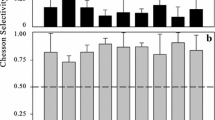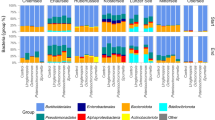Abstract
The role of grazing by marine sediment flagellates, ciliates, and meiobenthic animals in controlling production of their bacterial and diatom prey was investigated. Several novel or modified techniques were used to enumerate prey (bacteria and diatoms), measure bacterial production, quantify proto- and micrometazoan predators, and evaluate rates of bacterivory and herbivory. The results indicated that, in a temperate, marine intertidal flat composed of fine sand, colorless nanoflagellates, ciliates, and nematodes were the most important bacterivores. Together, these organisms were responsible for removing up to 53% of bacterial production, by grazing. The observed rates of bacterivory were high enough to hypothesize that periods of grazing control of bacterial production might occur regularly in similar habitats. Colorless microflagellates, ciliates, and nematodes had high rates of diatom consumption. The combined small diatom consumption rate was equivalent to 132% of diatom standing stock per day. Trophic interactions between diatoms and micro- and meiobenthos might be a factor limiting growth of small (around 10 μm) diatoms. In coarse sands of an open beach, all micrograzers except pigmented nanoflagellates were rare, whereas bacterial and diatom assemblages were rather abundant and active. In this type of sediment, the micrograzers were able to consume only a marginal percentage of bacterial production (<1%) and diatom standing stock (3.8%), thus playing a minor role in controlling the dynamics of their prey.
Similar content being viewed by others
Author information
Authors and Affiliations
Additional information
Received: 11 June 1996; Accepted: 13 August 1996
Rights and permissions
About this article
Cite this article
Epstein, S. Microbial Food Webs in Marine Sediments. I. Trophic Interactions and Grazing Rates in Two Tidal Flat Communities. Microb Ecol 34, 188–198 (1997). https://doi.org/10.1007/s002489900048
Issue Date:
DOI: https://doi.org/10.1007/s002489900048




